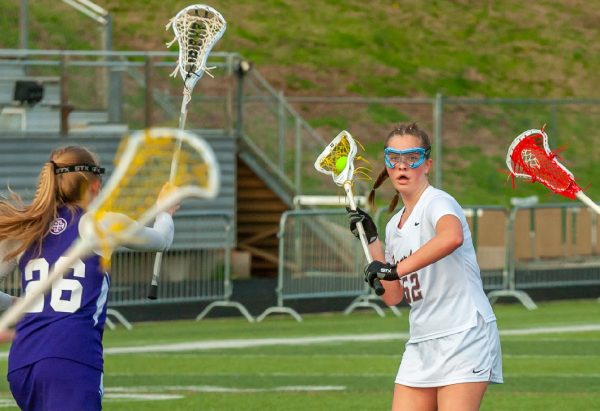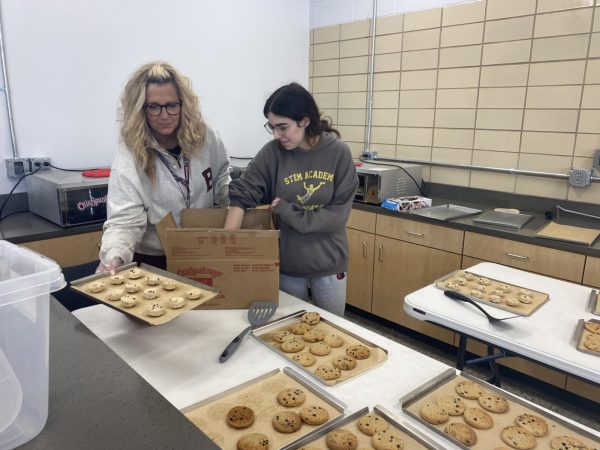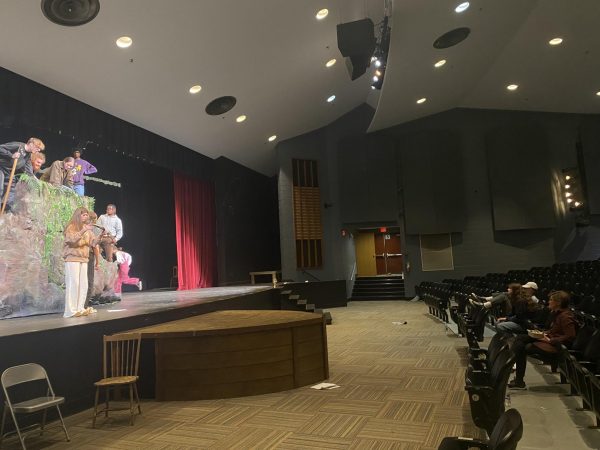Academy system will shift physical organization of Bearden through co-location
The freshman academy classrooms are grouped together upstairs to make it easier for students to navigate to classes and for teachers to collaborate.
The academy system at Bearden is already shifting the physical landscape of the traditional school via co-location.
The freshman academy already benefits from co-location, where classrooms within an academy are grouped together physically on campus, and this process will continue next year when Bearden rolls out the upperclassman academies.
This location of the Bearden High campus opened more than 50 years ago on Sept. 3, 1969, and administration quickly realized during preparations for the academy system that the layout of the building would prove to make co-location more difficult than expected.
“Our building is old, and there are parts of the school that are physically separated from the rest,” freshman academy dean Mrs. Rebecca Nutter said. “[Principal] Mrs. [Debbie] Sayers and the administrative team at BHS are doing their best to design co-location for the academies despite these challenges.”
Co-location does not necessarily mean that all of students’ classes will be in one area as specialized classrooms such as the gym, art rooms, and science labs cannot move around.
Additionally, when the career academies begin, students will still have the option to take courses that are either global or not aligned with their academy, which will put their classes in different parts of the building.
There are many benefits of co-location in relation to the academy, including being able to efficiently find classes, being around students who share many classes and interests, and teachers within an academy being able to easily collaborate.
“The biggest benefit of co-location for students is that it helps Bearden feel smaller,” Mrs. Nutter said. “BHS is a huge school, and we often have students, especially in 9th grade, who struggle to adjust to a school the size of Bearden.
“Co-location takes out some of the expanse of the building by locating classes closer to one another.”
Added freshman Kendall Coe: “The classes being so nearby helps us get to class on time and even leaves time for me to talk to friends before class.”
Coe said she has even seen the benefits of teachers from two core classes being able to help one another with content.
“Like in biology, if we’re working on something, our math teacher may show us how to do the math that relates to what we’re learning in biology at the time,” Coe said.
Co-location existed on campus prior to the academy model, but with teachers in close proximity to other teachers in their subject area.
“This made it easy to stay connected with other teachers in our departments,” Mrs. Nutter said. “The co-location is changing now to academy-based co-location. This directly supports one of the goals of the academy model, which is to create a smaller learning community.”
Additionally, having different subjects within the academy in the same area of the building allows teachers to build more personal relationships with students and to discuss how to help individual students best learn and grow.
“Previously, these discussions would require a walk across the school or a less-personal email,” Mrs. Nutter said. “Now, I can have these discussions face-to-face with other teachers as we stand in the hallway.”
Just this week, administration asked freshmen to complete an anonymous survey about their experience at BHS so far. In that survey, 70% of respondents said their transition to high school has been smooth.
Additionally, co-location has cut down on tardiness and behavior issues in the hallway, Mrs. Nutter said.
Bearden will announce the details of the physical locations of the academies sometime next semester.







